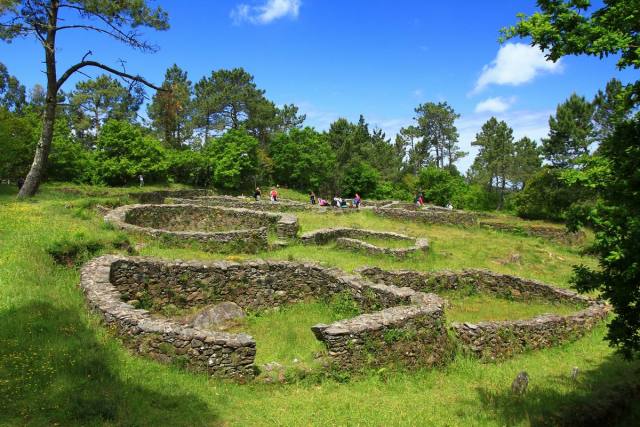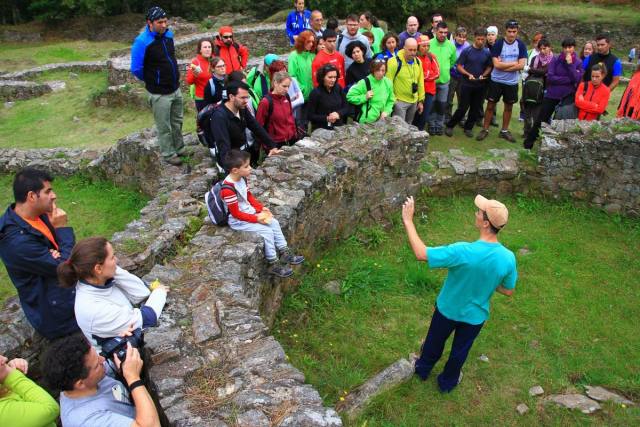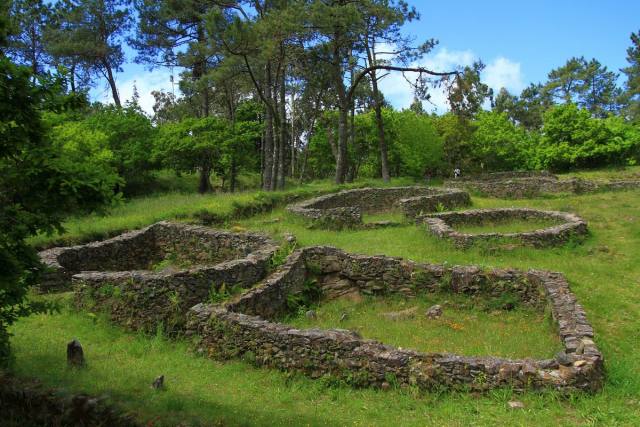This Castro was discovered in 1924 by Isidro Parga Pondal. The different archaeological excavations carried out let us see nowadays most of the “castro” and study the lifestyle of those people. It was inhabited between the 1st and 6th century and it seems not to have been Romanized.
There are lots of “castros” in this area. These settlements are in the high lands from where they dominate the whole area, and they are usually close to the bed of the rivers where they took the water from. This “castro” is a perfect example: there are several walls that surround the “castro” as a defense. There is also a stream close to it. From the “castro”, which is 200 meters high, we can see the mouth of the river Anllóns and the estuary of Corme and Laxe.
Most of the houses have a circular shape, with a 5-meter diameter. The ground floor of most of them is still kept in good condition. Apart from these dwellings, there are some remains of some other places of the village where the inhabitants carried out some other tasks. In the eastern area, which can be considered the entrance of the village, there is a kind of complex formed by a big oval house, two fountains and a circular oven used to melt the metal.
Its inhabitants were farmers, as some pieces of pottery and bronze have been found, prove that they used them in their daily tasks. These pieces are exhibited in the Castle of San Antón in A Coruña. As this “castro” is closed to the sea, it is believed that its inhabitants also carried out tasks related to fishing and shellfish-gathering. Without a doubt, it is a place to visit to know the lifestyle of the people of that time in this part of the coast.
Along the route, there are some monoliths that indicate that it is not allowed to sit or walk along their walls. In summer time, there is a guide who shows the visitor all this “jerarquía castreña” (the “castros” show the hierarchy of the people of that time) and its lifestyle, where men and women share the tasks and goods in a society where the age was the indicator of the largest ranges.












